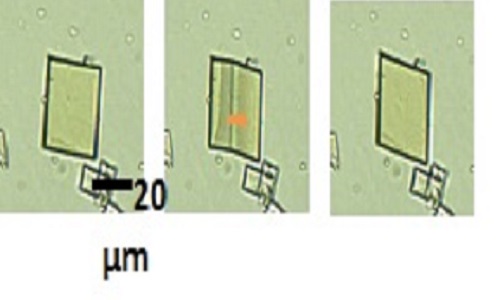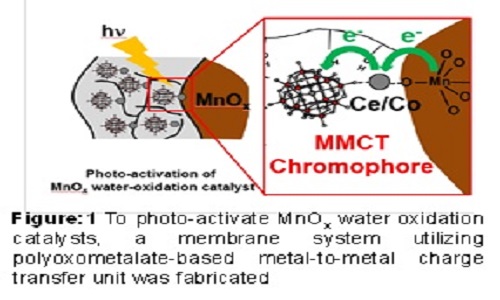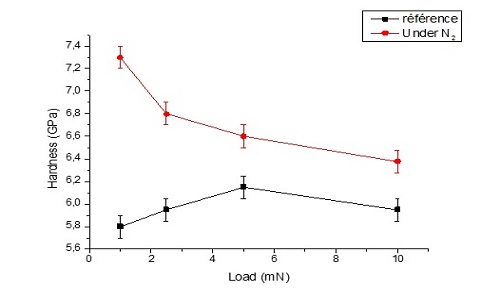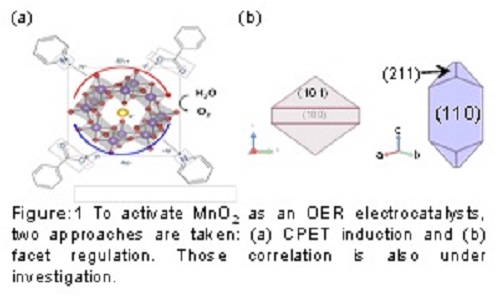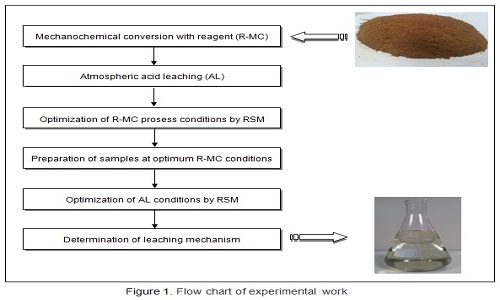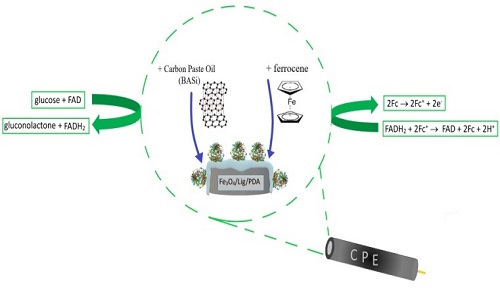Day 1 :
Keynote Forum
Hanshan Dong
University of Birmingham, UK
Keynote: Surface multi-functionalization of carbon fibres by novel plasma surface engineering technologies
Time : 09:30-10:10

Biography:
Hanshan Dong received his PhD degree in Surface Engineering in 1997 and became a full Professor in 2010 at the University of Birmingham, Birmingham, UK. He is a leading Surface Engineering Expert in developing novel surface engineering technologies (S-phase surface engineering of corrosion resistant alloys, ceramic conversion of Ti- and Zr-based alloys, plasma multi-functionalization of carbon-based nano-materials, combined surface alloying and patterning for high-efficacy antibacterial surfaces, and low-friction and anti-adhesion coatings), surface designing and modelling and in characterizing surface engineered materials using environmental nanoindentation, FIB/SEM and XTEM. In addition to six patents, he has about 300 papers published (including 200 journal papers).
To present & exhibit your MATERIALS @ our upcoming series PS: Materials Conferences | Materials Chemistry Conferences | Materials Chemistry 2020
Abstract:
Carbon fibres (CFs) are leading reinforcements in composite materials but the weak fibre/matrix interface adhesion becomes a barrier to further increase the mechanical properties of composite materials; carbon nanofibers (CNFs) have attracted much attention for electrodes of energy storage devices, but how to increase their performance presents a major technical challenge. To this end, some new plasma surface engineering technologies have been developed at the Birmingham Surface Engineering Research Group to multi-functionalize carbon fibre surfaces. This talk will start with the recent development of innovative plasma surface engineering technologies. The potential of these new plasma technologies will be demonstrated by way of examples including, (i) plasma activation and functionalization of CF surfaces by increasing their surface roughness, removing weakly bonded layers, altering their surface chemistry and enhancing their wettability and (ii) triple-glow plasma activation and deposition of metal nanoparticles to confer new and/or enhance surface properties and electrochemical performance (such as significantly increased capacity).
Keynote Forum
Theo Rasing
Radboud University, Netherlands
Keynote: Jumping crystals: Controlled giant thermoelastic deformation of an organic molecular crystal
Time : 10:10-10:50

Biography:
Theo Rasing is a full Professor of Physics at Radboud University, Nijmegen. He is the Elected Member of the Royal Dutch Academy of Arts and Sciences (KNAW) and the Academia Europaea. He is an Honorary Member of the Ioffe Institute in St. Petersburg; Knight of the Order of the Dutch Lion and recipient of many scientific prices and awards, including an ERC Advanced Grant 2013, the Spinoza Award 2008, and the Prize for Science and Society 2008. His research focuses on the investigation and control of the properties of functional (molecular/photonic) nanomaterials on ultrafast (femtosecond) timescales. He has co-authored over 480 papers with over 12000 citations (h index 54, Web of Science). His publications include 41 articles in Physical Review Letters and 15 in Nature Group Journals. One of the Physical Review Letters of 2007 was mentioned as one of the breakthroughs of the year by the journal Science. He is a Co-Inventor on 3 patent applications.
To present & exhibit your MATERIALS @ our upcoming series PS: Materials Conferences | Materials Chemistry Conferences | Materials Chemistry 2020
Abstract:
Thermosalient molecular crystals are characterized by thermally induced single crystal to single crystal phase transitions that are accompanied by sudden anisotropic lattice expansion, giving rise to huge mechanical responses to external stimuli: upon heating or cooling they jump distances many times their own size. This makes these materials invaluable for the design of a new generation of switchable smart materials which are central to, e.g., soft robotics, artificial muscles and microfluidic valves. The abrupt and strong macroscopic shape changes are connected to a structural phase transition inside such crystals. However, the detailed mechanisms of these phase transitions are unknown. In addition, the large changes in crystal shape and size is difficult to accommodate for the often brittle organic crystals and the mechanical effects are usually accompanied by crystal cracking, splitting or even explosion. Here, we report on a layered crystal structure of the fluorenone derivative 4-DBpFO, clearly showing a strong and reproducible shear deformation when it undergoes a structural phase transition upon heating. Moreover, this shear deformation can be observed along two orthogonal crystal directions, which appears to be connected to its crystal structure. The deformation of the single crystal can be controlled by heating/cooling cycles without destroying it. Modelling shows that the shear deformation that accompanies the in-plane anisotropic lattice expansion results from in-plane molecular rotations during the phase transition and follows a nucleation and growth path. We believe that 4-DBpFO could serve as a model structure to guide the development of new types of robust thermosalient organic crystals.
Microscopic images showing the shear deformation of a planar quadrangular single crystal (left) to a diamond shape (right) during the α- to β-phase transformation of 4-DBpFO. The arrow in the middle picture indicates the movement of the phase boundary.
Networking & Refreshments Break 10:50-11:05 @ Foyer
Keynote Forum
Akira Yamaguchi
Tokyo Institute of Technology, Japan
Keynote: Design of metal-to-metal charge transfer chromophores for visible light activation of oxygen evolving Mn oxide catalysts in a polymer film
Time : 11:05-11:45

Biography:
Akira Yamaguchi received his Doctor of Engineering degree at the University of Tokyo in 2015 for the work on functionalization of metal-oxide and sulfide minerals toward efficient multi-electron transfer catalysis with abundant elements under the direction of Prof. Kazuhito Hashimoto. After his Postdoctoral research in Dr. Ryuhei Nakamura’s laboratory of RIKEN from April 2015 to March 2016, he joined Tokyo Institute of Technology as an Assistant Professor. His particular field is Electrochemistry and his research interest includes the development of catalysts and the primordial carbon fixation on the Earth. Recently, he developed MnOx-based water oxidation catalysts inspired by the natural photosynthesis. Now he is aiming at the solar to chemical energy conversion system, called artificial photosynthesis, and his experience in developing water oxidation catalysts will contribute to this research fields.
To present & exhibit your MATERIALS @ our upcoming series PS: Materials Conferences | Materials Chemistry Conferences | Materials Chemistry 2020
Abstract:
Developing effective solar to energy conversion system is highly demanding for sustainable society, and one of the challenges is the management of the charge transfer between photo-absorption center and catalysts. In this work, to construct photo-responsive unidirectional charge transfer units for the activation of oxygen-evolving manganese oxide (MnOx) catalyst, metal-oxide nanoclusters consisting of cerium (CeIII) or cobalt (CoII) ions and Keggin-type polyoxotungstate (PW12O403-) were synthesized in a polymer matrix as visible-light-absorbing chromophores. The utilization of the polymer matrix enabled the molecularly-dispersed PW12O403- states and was advantageous to achieve product separable energy conversion systems. The reaction of PW12O403- with Ce or Co ions in the polymer matrix generated the new broad absorption tails extending from UV to visible region assignable to metal-to-metal charge transfer (MMCT) transitions of oxo-bridged binuclear WVI–O–CeIII and WVI–O–CoII units. Although visible light irradiation of the polymer membrane having WVI–O–CoII units generated negligible photocurrent, a clear anodic photocurrent response assigned to photo-induced WVI–O–CoII ® WV–O–CoIII transition was observed after the coupling of MnOx catalysts to WVI–O–CoII units. This finding demonstrated that the generation of anodic photocurrent is derived from the activation of MnOx catalyst by the photo-generated CoIII through confined WVI–O–CoII linkages. The system in this work based on POM and polymer, and its synthetic method provide us a novel methodology to develop artificial photosynthetic systems with spatially and energetically-optimized components.
- Materials Science and Chemistry | Materials Science and Engineering | Materials Chemistry in Developing Areas | Materials Synthesis and Characterization | Polymeric Materials
Location: Olimpica 2

Chair
Fargin Evelyne
ICMCB - Universite Bordeaux, France

Co-Chair
Xiaoying Li
University of Birmingham, UK
Session Introduction
Kyriakos Porfyrakis
University of Oxford, UK
Title: Orientation studies of endohedral nitrogen fullerenes and their watersolubilization, progress and opportunities
Time : 11:45-12:15

Biography:
Kyriakos Porfyrakis is an Associate Professor of Materials, an EPSRC Fellow and the Head of the Laboratory for Carbon Nanomaterials at the Department of Materials, University of Oxford. He has attracted over £2.5 M in funding as a Principal Investigator in the fields of Endohedral Fullerenes and Organic Electronics. He has over 100 publications (h-index: 27, i10-index: 52) that has attracted over 2370 citations. He has presented over 40 invited lectures and seminars, including 3 keynote lectures. In 2005, he won the Alan Glanvill Award of IOM3. In 2016, he was admitted as a Fellow at the Royal Society of Chemistry for his contributions to Chemical Sciences. He is the Academic Founder and Director of Designer Carbon Materials Ltd., a spinout company of the University of Oxford, aiming to commercialize endohedral fullerenes and their derivatives.
To present & exhibit your MATERIALS @ our upcoming series PS: Materials Conferences | Materials Chemistry Conferences | Materials Chemistry 2020
Abstract:
Paramagnetic endohedral fullerenes hold promise for a number of applications including quantum information processing and quantum sensing. In the case of endohedral nitrogen fullerenes such as N@C60 and N@C70, the nitrogen atom is almost completely isolated from the fullerene cage. This results in very long electron spin phase coherence times. The chemistry of endohedral nitrogen fullerenes has developed to a degree where it can be used to create functionalized systems with high aspect ratios that are prone to high alignment. This talk will deal with our recent results for several N@C60 and N@C70 derivatives aligned in liquid crystals. Within the liquid crystal matrix, we have achieved an order parameter factor Ozz of 0.61. This is a significant improvement on the best result that has been previously reported for endohedral fullerene derivatives. More importantly, this allows us to manipulate the intrinsic zero-field splitting (ZFS) of the spin resonance signal. By in situ rotating frozen endohedral fullerenes inside the magnetic field of the ESR spectrometer, we deliberately changed the orientation distribution of the molecules and tuned the splitting energy of ZFS. We achieved remarkable agreement between experimental values and simulation data. This work can be expanded to control of dipolar coupling for a two-qubit gate. Also, the water functionalization of N@C60 will be discussed. We have developed the first water-soluble derivative of N@C60 through the covalent attachment of a single addend, containing two permethylated β-cyclodextrin units to the surface of the carbon cage. The linewidth of the derivative's EPR signal is highly sensitive to both the nature of the solvent and the presence of Cu(II) ions in solution. Thus, we have shown that it has the potential to be used as a quantum sensor for other spin-active species.
Fargin Evelyne
ICMCB - Universite Bordeaux, France
Title: Surface engineering of soda lime silicate glass under thermal poling process for hardness reinforcement
Time : 12:15-12:45

Biography:
Fargin Evelyne has strong experience in nonlinear optical properties of glasses and particularly third and second order nonlinear susceptibility. She implanted in Bordeaux the surface glass processing by poling which is now developed with co-workers for composition, mechanical properties and optical structuring of the glass surface. She recently developed new heavy glass oxides for fiber applications thanks to strong collaborations inside an international laboratory LUMAQ (U. Bordeaux, COPL Laval, INRS Québec). She also was involved in the study and optimization of laser-induced defects in glasses and luminescence properties of flaws for the Megajoule Laser Facility in Bordeaux.
To present & exhibit your MATERIALS @ our upcoming series PS: Materials Conferences | Materials Chemistry Conferences | Materials Chemistry 2020
Abstract:
Surface engineering of soda-lime silicate glass has been performed by thermal poling and the correlation between the modification of the glass composition, the local structure and the mechanical properties of the field-induced modified surface has been investigated. Glow discharge optical emission spectroscopy (GD-OES) demonstrates the multi-layered structuring of the glass surface, due to the migration of mobile cations species. The nature of the atmosphere during poling directly impacts on the charge compensation mechanisms, the multi-layer shape and composition. This work demonstrates the presence of a pure layer of silica beneath the surface of the poled glass under N2 which strongly increases the mechanical properties of soda-lime glass, especially hardness. The thermal poling treatment is then used to enhance a densification of the poled region and a compressive stress at the silica nanometric layer surface.
Berkovitch nano-indentation results on unpoled reference versus poled soda-lime glass under N2
John O Roberts
University of Liverpool, UK
Title: Proposed link between the periodic table and the standard model
Time : 13:45-14:15

Biography:
John O Roberts has been an Open University Science Tutor for 30 years having attended Rutherford Appleton Lab and CERN as a summer school student. He has been a Freelance Tutor of Maths, Physics and Chemistry for many years and wrote the book “Those Infinities and the Periodic Table” over a period of 5 years from an idea in December 2010.
To present & exhibit your MATERIALS @ our upcoming series PS: Materials Conferences | Materials Chemistry Conferences | Materials Chemistry 2020
Abstract:
The patterns of stable quantum states in the periodic table are inverted and extended to infinity in both directions to accommodate spatial variation relative to the nucleus. The upper end leads to a cut off point for white matter. The lower end represents quantum states in plasma. At 10-15 m to 10-20 m the interaction between weak, strong and gravity forces results in suitable boundary conditions for the production of elementary particles. Chemical classification of the elements requires convergence of chemical properties and quantum states. By defining group number as the maximum number of electrons in any one shell, hydrogen and helium are moved to the first set of 2(1)2 states first proposed by Janet. The atomic numbers are adjusted and mass number removed as it is an average of isotopes of each element produced in every supernova. This produces the Roberts Janet nuclear periodic table which proposes two zero states, a cut off and start point, of the electric field in attractive then repulsive modes. By symmetry of these fields energy states emerge in plasma with the counter intuitive property that the nearer the nucleus the greater the number of energy states. Fusion results and the consequential recycling implies a more rapid collapse than supernovae given sufficient energy density that could create an as yet unobserved interaction at 10-50 m to 10-65 m between the strong and gravity forces. String theory and extra dimensions may be required to explain such mechanisms and multiverses.
Jin An Wang
Instituto Politecnico Nacional, Mexico
Title: Correlation of oxygen defects with surface Lewis acidity and catalytic properties of hybrid MoO3/SBA-15 catalysts
Time : 14:15-14:45

Biography:
Jin An Wang is a full Professor in Chemical Engineering at the National Polytechnic Institute in Mexico City, Mexico. He is a National Researcher of Mexico and a Member of the Mexican Academy of Sciences. He is the Co-Author of more than 160 scientific publications, five patents, Co-Editor of three books in “Advanced Catalytic Materials” and three special volumes in Catalysis Today. He served as Chair of the first to fifth International Symposium on New Catalytic Materials. He was a Visiting Professor at Universidad Nacional Autónoma de Mexico, Universidad Autónoma Metropolitana and Worcester Polytechnic Institute in USA. His research interest focuses on the synthesis of new catalytic materials, catalysis for petroleum refining and treatment, catalysis for clean fuel production and environmental catalysis.
To present & exhibit your MATERIALS @ our upcoming series PS: Materials Conferences | Materials Chemistry Conferences | Materials Chemistry 2020
Abstract:
There are many structural defects or lattice vacancies in the surface of solid materials. From the surface sciences and catalysis points of view, these cationic or anionic defects are active centers for reactant adsorption and surface reactions. Investigation on structural defects and their correlation with reaction activity may provide new insight into the understanding of catalytic behaviors. In this work, a set of MoO3/SBA-15 mesoporous hybrid catalysts were characterized with a variety of spectroscopic techniques and their crystalline structures were refined with Rietveld method. Oxygen defect concentration, crystallite size, phase composition, surface acidity, mesoporous regularity and textural properties were reported. Both α‒MoO3 and β‒MoO3 phases coexisted but α‒MoO3 was predominated. Oxygen defects were created in the orthorhombic structure and its concentration decreased as MoO3 content increased. All the MoO3/SBA-15 catalysts chiefly contained a big number of Lewis acid sites originating from oxygen defects in MoO3 crystals. In the absence of formic acid, the oxidation of 4,6-dibenzothiophene in a model diesel was almost proportional to the number of Lewis acid sites of the catalysts. In the presence of formic acid, 4,6-dimethyldibenzothiophene (4,6‒DMDBT) oxidation was significantly affected by the formation of surface peroxometallic complex and Lewis acidity. Formic acid addition could improve the oxidative desulfurization (ODS) efficiency by promoting peroxometallic complex formation and enhancing oxidant stability. Under the optimal reaction condition using the best 15 and 20 wt% MoO3/SBA-15 catalysts, more than 99% 4,6‒DMDBT could be removed at 70°C within 30 min. This work confirmed that 4,6‒DMDBT oxidation is a texture and particle size sensitive and Lewis acidity dependent reaction. This work also shows that crystalline structure refinement combination with experiments can gain new insights in the design of heterogeneous nanocatalysts and help to better understand the catalytic behavior in the oxidative desulfurization reactions.
A Rietveld refinement plot for the 20 wt% MoO3/SBA-15 catalyst
Xiaoying Li
University of Birmingham, UK
Title: Ceramic conversion treatments of a low cost beta titanium alloy to combat wear
Time : 14:45-15:15

Biography:
Xiaoying Li received her PhD degree in Surface Engineering in 1999 and became a Senior Researcher in 2017 at the Surface Engineering Group, University of Birmingham, UK. As a Research Manager of the group, she has successfully completed a dozen of high quality research projects and published about 90 peer reviewed papers. She has delivered a dozen of invited talks to national and international conferences. Her research work has been focused on development of advanced surface engineering technologies, including novel ceramic conversion treatments of light alloys, low-temperature plasma surface alloying of stainless steels and recently surface modification of carbon fibres; microstructural characterisation of surface engineered materials, in particular the nature of metastable S-phase using cross-sectional TEM (XTEM) and more recently nano-surface fabrication and characterisation of nano composite materials using nanoindentation FIB/SEM and XTEM.
To present & exhibit your MATERIALS @ our upcoming series PS: Materials Conferences | Materials Chemistry Conferences | Materials Chemistry 2020
Abstract:
The non-aerospace use of titanium alloys (such as in the motor sports industry) has become increasingly popular over the last 20 years due to their light weight, high ductility and high strength in conjunction with excellent corrosion resistance and outstanding biocompatibility. Titanium alloys are normally classified by their structure into the groups of alpha, alpha-beta and beta alloys. Advantages of beta alloys include excellent workability, good hardening properties, high corrosion resistance and excellent fatigue/crack propagation behavior. However, titanium and its alloys are characterized by inferior tribological properties including a high and unstable coefficient of friction and a strong scuffing tendency. Many surface engineering methods have been researched to combat the poor tribological properties of titanium and its alloys. Research carried out by Dong and Bell on the titanium alloy Ti-6Al-4V demonstrated the effectiveness of the thermal oxidation (TO) treatment in enhancing the wear resistance of the alpha/beta alloy. However, this process cannot be directly applied to the TIMET low cost beta (LCB) alloy since it is a metastable beta alloy. The long-time TO treatment at high-temperature will cause undue growth of the beta grains and excessive precipitation and growth of the alpha phase, thus leading to the degradation of the core mechanical properties of the beta-alloy. Therefore, the aim of this research was to enhance the tribological properties of TIMETAL LCB alloy without evoking a loss of core mechanical properties through developing new surface engineering processes based on integration of bulk heat treatment with surface ceramic conversion. The new integrated processes effectively harden the LCB without compromising the mechanical properties of the beta alloy. A dense adherent titanium oxide was formed on the oxygen hardened sublayer. The surface hardness was increased from 400 to 1100 HV and the sliding wear resistance was increased by more than 10 times following the optimal integrated treatment.
Akira Yamaguchi
Tokyo Institute of Technology, Japan
Title: Functionalization of MnO2 as a water oxidation catalysts in terms of the redox chemistry of Mn
Time : 15:15-15:45

Biography:
Akira Yamaguchi received his Doctor of Engineering degree at the University of Tokyo in 2015 for the work on functionalization of metal-oxide and sulfide minerals toward efficient multi-electron transfer catalysis with abundant elements under the direction of Prof. Kazuhito Hashimoto. After his Postdoctoral research in Dr. Ryuhei Nakamura’s laboratory of RIKEN from April 2015 to March 2016, he joined Tokyo Institute of Technology as an Assistant Professor. His particular field is Electrochemistry and his research interest includes the development of catalysts and the primordial carbon fixation on the Earth. Recently, he developed MnOx-based water oxidation catalysts inspired by the natural photosynthesis. Now he is aiming at the solar to chemical energy conversion system, called artificial photosynthesis, and his experience in developing water oxidation catalysts will contribute to this research fields.
To present & exhibit your MATERIALS @ our upcoming series PS: Materials Conferences | Materials Chemistry Conferences | Materials Chemistry 2020
Abstract:
To overcome energy and environmental issues we are facing, fuel production from water and/or CO2 is highly demanding. Making fuels through both H+ and CO2 requires electrons, and the most abundant electron source in the world is water, like natural photosynthesis achieved by oxygen evolution reaction (OER: 2H2O → O2 + 4H+ + 4e-). Inspired by the oxygen evolution reaction (OER) center in natural photosynthesis, which is composed of CaMn4O5 cluster, numerous numbers of manganese oxide-based catalysts have been developed. However, their activity largely decreased under neutral pH. This work introduces the design strategy to enhance the OER activity of MnO2 electrocatalysts under neutral pH in terms of the redox chemistry of active Mn species. The key chemical species is Mn3+, which works as the intermediate of OER on MnO2 but unstable under neutral pH. To stabilize Mn3+, induction of concerted proton-electron transfer (CPET) and regulation of facet orientation were attempted. Regarding the CPET induction, introduction of pyridine into the electrolyte, which works as a CPET inducer, altered the reaction path and resulted in the activity enhancement. As to the facet orientation regulation, (101)-oriented MnO2 was synthesized based on the article which reports that Mn3+ is stabilized on (101) facet of rutile MnO2. The electrochemical OER examination revealed that (101)-oriented sample exhibited higher activity than (110)-oriented ones. The results indicate that those two approaches are efficient strategy to enhance the electrochemical OER activity of MnO2 under neutral pH. Further studies concerning the corporative effect of CPET and facet orientation have been under investigation.
Nana Gorgaslidze
Tbilisi State Medical University, Georgia
Title: Development of method for quantitative determination of bromelain in gel formulation
Time : 16:00-16:30

Biography:
Nana Gorgaslidze completed her PhD from Saint-Petersburg State Chemical-Pharmaceutical Academy, Russia. She is the Director of the Iovel Kutateladze Institute of Pharmacochemistry, Tbilisi State Medical University (TSMU) and Professor at the Department of Social and Clinical Pharmacy at TSMU. She has published more than 94 papers in reputed journals, authored four books and has two patents. She is a Member of organizing committee of several international conferences and meetings. She has more 40 years of teaching experience at the Tbilisi State Medical University, Georgia. She is the Founder of the Georgian Pharmaceutical Association (President: 2002–2005) and newspaper, Pharmacy. She is a Member of Scientist and Young Pharmacists of Georgia. She has long timework experience at the Ministry of Health, Labor and Social Affairs of Georgia in state control of quality medicinal and pharmaceutical products and other departments of the same minisity.
To present & exhibit your MATERIALS @ our upcoming series PS: Materials Conferences | Materials Chemistry Conferences | Materials Chemistry 2020
Abstract:
Gel of bromelain has anti-inflammatory properties and hence is used for treatment of edema and inflammations. This was developed at TSMU Iovel Kutateladze Institute of Pharmacochemistry. On previous researches we published the data of some properties of papain and bromelain containing gels. The presented work belongs to the development and validation of accurate and sensitive assay method for quantitative determination of bromelain in gel based on UV-spectrophotometric analysis. Elastasin was used as substrates for their analysis. Absorbance was recorded at 595 nm. The developed method is linear, precise and sensitive; Intra- and inter-day measurements. All methods were validated as per ICH guidelines and can be adopted for the routine analysis of bromelain in gel formulations.
Seda Cetintas
Kocaeli University, Turkey
Title: YRF: A new hydrometallurgical process involving mechanochemical conversion with reagent
Time : 16:30-16:50

Biography:
Seda Cetintas graduated in 2011 from Department of Chemistry at Faculty of Science and Arts in Anadolu University. She received MD in 2014 and then started PhD in Chemistry from Kocaeli University. Her primary specialization was applications on recovery of metal values from ores and removal of impurities. Her secondary specialization was applications on statistical design of experiments. She is interested in applying these topics to several content areas in analytical chemistry, including separation, purification and enrichment. During PhD, she works in a research project on nickel recovery from lateritic ore.
To present & exhibit your MATERIALS @ our upcoming series PS: Materials Conferences | Materials Chemistry Conferences | Materials Chemistry 2020
Abstract:
In this study, a new application of nickel improvement is proposed involving mechanochemical conversion with a reagent (R-MC) followed by an acid leaching (AL) process. It was developed based on the synergistic effects of high-energy milling and different chemical reagents which have a positive effect on extractive metallurgical leaching processes. The combination of R-MC as a pretreatment of AL aimed to overcome the disadvantages of traditional metallurgical processes used for nickel recovery, such as high temperature, high acid concentration, high cost and material requirements. For the statistical design of experiments combined with regression techniques, response surface methodology (RSM) involving central composite design (CCD) was applied to optimize the key factors that affect processes conditions in both R-MC and AL for high-efficiency nickel recovery. The optimum processes conditions of both R-MC and AL were determined for high-efficiency nickel recovery process by designing the experiment and performing a statistical analysis on the experimental data. The large determination coefficients (R2>95%) for each process indicated that CCD is a suitable design for both mechanochemical process with reagent and acid leaching. The FTIR, XRD and SEM analyses results support each other in that the application of mechanochemical processes has positive effects on valuable metal recovery in extractive metallurgy. In addition, the experimental data obtained from leaching experiments was evaluated according to shrinking core model equations to determine the advantages of mechanochemical processes on leaching kinetics. The leaching control step was identified as both chemically and diffusion-controlled by the shrinking core kinetic model. Thus, this study provided a new and more economical method in which mechanochemical pretreatments with reagents were combined with acid leaching. The positive effect of mechanochemical processes on leaching with reagents was defined by their high nickel efficiency (Ni(%)>95%) at lower acid concentrations (0.5 M
A Jedrzak
Poznan University of Technology, Poland
Title: YRF: Biosensor based on magnetite/lignin/polydopamine hybrid material combined with glucose oxidase for amperometric glucose biosensor
Time : 16:50-17:10

Biography:
A Jedrzak has received his MSc degree in Organic Chemistry in 2016 at Poznan University of Technology. Since 2016 he is a PhD student of Chemical Technology at Poznan University of Technology and also a Member of NanoBioMedical Centre in Poznan. His research interests are biosensors, enzymatic and catalytic systems and synthesis of hybrid/composite materials for nanomedicine.
To present & exhibit your MATERIALS @ our upcoming series PS: Materials Conferences | Materials Chemistry Conferences | Materials Chemistry 2020
Abstract:
The development of technology has contributed to the intensification of research into the creation of more advanced materials. Such demands can be fulfilled by various inorganic-organic hybrid materials that were previously widely used in many fields in science also for enzyme immobilization or biosensors constructions. Rapid development of biosensor systems started after the first biosensor containing glucose oxidase was developed by Clark and Lyons in 1962. To this day, many scientists are working on new methods of creation to better detection, as evidenced by amounts of published papers. Novel innovative materials for glucose biosensor have gained enormous attention due to the need for a cheap and effective blood glucose monitoring. Monitoring of glucose level is important aspect in various media, like blood, fluids or juices. Despite the presence in the market of biochemical specialists for the qualitative and quantitative detection of glucose, the commercial available glucose monitoring device have become a crucial part of diabetes care or monosaccharide but has some limitations in accuracy and errors that can be limited due to manufacturing variances, storage, aging etc. Great efforts have been focused on the preparation of magnetite/lignin/polydopamine (Fe3O4/Lig/PDA) hybrid material combined with glucose oxidase for amperometric glucose biosensors. In this work a synthesis and physicochemical characterization of a novel magnetite/lignin/polydopamine (Fe3O4/Lig/PDA) material is presented as a novel and effective platform for enzyme immobilization and biosensing application. The platform has interesting features like improved thermal and mechanical stability, excellent adhesion for inorganic and organic materials, transferability of electrons and photo thermal properties. Greater material stability and durability and the extension of its attractiveness, compared to the current commercial products can be used in determining the level of glucose in different media like body fluids, juices, fruits.
Scheme presents construction of biosensor using a carbon paste electrode (CPE)

